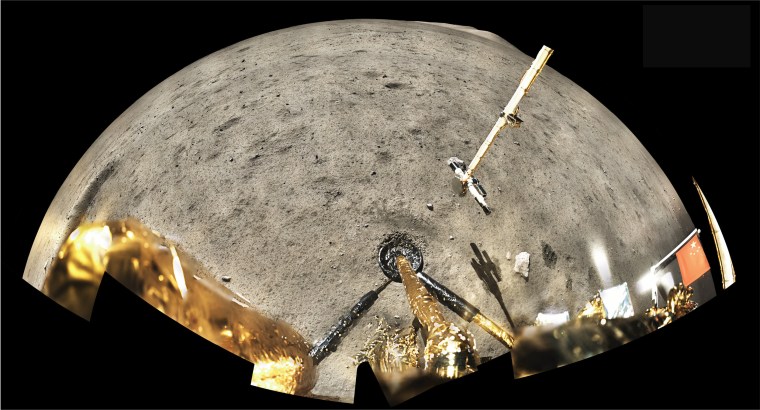The moon was volcanically active later in its history than scientists previously thought, the first lunar rocks brought back to Earth in more than 40 years have revealed.
An international consortium of scientists, led by researchers at the Chinese Academy of Geological Sciences, examined samples from the moon that were collected by China's Chang'e 5 spacecraft, which landed on the moon in late 2020 and gathered more than 4 pounds of materials from the lunar surface. The researchers found that the moon rocks are around 2 billion years old and are the remnants of an ancient lava flow.
The results, published Thursday in the journal Science, offer a more detailed understanding of how the moon evolved and could help scientists piece together how the planets in the inner solar system, including Earth and Mars, formed roughly 4.5 billion years ago.
Moon rocks from NASA's Apollo program, which ended in 1972, and the former Soviet Union's Luna 24 mission, which returned approximately 6 ounces of lunar samples to Earth in 1976, indicated that the bulk of volcanic activity on the moon likely occurred early in its history, from roughly 3 billion to slightly earlier than 4 billion years ago.
After that, volcanism on the moon appeared to wane, said Bradley Jolliff, a planetary scientist at Washington University in St. Louis and a co-author of the new study.
"The general assumption was that the moon is such a small body compared to Earth and Mars, for example, so it cooled off more quickly and stopped producing volcanics," he said.
But in the decades since the Apollo and the Luna missions, scientists observed areas on the moon that are not as heavily pockmarked with impact craters, which suggests that materials on the surface are younger because of volcanic eruptions.
Scientists use a technique known as "crater counting" to estimate the age of planetary surfaces. Researchers can gauge the chronology of craters based on the known ages of samples from the Apollo moon missions.
Crater counting indicated that some of the moon's surfaces with fewer impact craters were between 1 billion and 2 billion years old, according to Jolliff.
"That left us scratching our heads," he said. "How could volcanism have persisted for that long on the moon when we thought it cooled quickly?"
The Chang'e 5 samples appear to confirm that the moon was volcanically active for longer than scientists previously thought. The samples from the Chinese mission were formed from magma that erupted around 2 billion years ago, which Jolliff said will also help researchers better calibrate the crater counting technique.
The Chang'e 5 spacecraft landed on a volcanic plain on the moon known as the Oceanus Procellarum, or Ocean of Storms. The samples, gathered from the surface and from 6 feet into the lunar crust, are expected to fill major gaps in knowledge of the moon's history.
"It's fantastic," Jolliff said. "If the moon was a continent-sized object, the Apollo and Luna samples would be like sampling only one state. Imagine if that's all we know about an entire continent."

